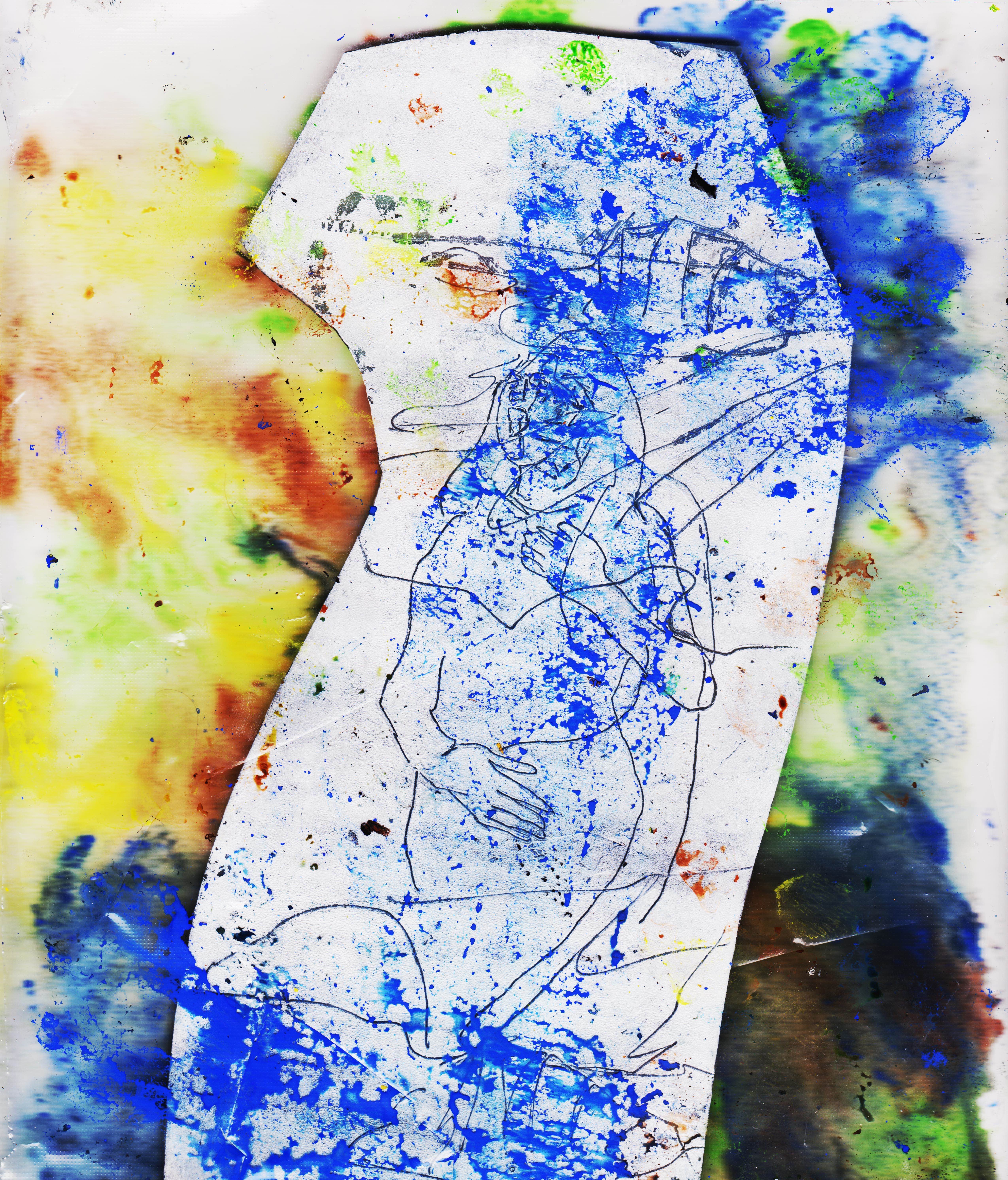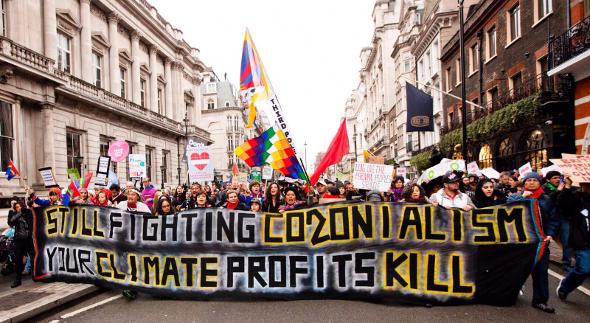How a South African dance craze became the battlesong of the fight to save Goa from destruction
India's eden is under threat. But youth activists – with the help of a global dance craze – have no intention of letting their Goa go.
Annalie Gracias
12 Jan 2021

Photography courtesy of Chicalim Youth Farmers Club
Goa, a tiny speck on the Indian subcontinent, is a tropical paradise of bountiful beaches, sunny sands, rolling fields, gurgling rivers and verdant wilds. And nestled in this land breathes the lungs of Goa – the Mollem National Park and Bhagwan Mahavir Wildlife Sanctuary. This stretch of protected forest area is situated within the Western Ghats, a global biodiversity hotspot recognised as a UNESCO World Heritage Site.
This eden is under threat though. Authorities have approved three projects that will tear through the forest: the doubling up of an existing railway line, an expansion of a national highway, and the installation of a 400-kV power transmission line. Two of these were granted environmental clearances by the National Board for Wildlife via a virtual meeting during the pandemic.
In response, a people’s movement has erupted as locals, young and old, have taken up the cudgels to fight for Goa, through grassroots programmes, peaceful protests, Twitter storms, and addressing letters to officials. Youth have taken to the streets in vociferous opposition to these projects. A main medium of choice: flashmobs performing protest routines accompanied by South African hit ‘Jerusalema’.
‘Jerusalema’, a track by Master KG and Nocembo Zikode, with its distinct beat, is a song that makes you immediately begin to tap your feet. A dance video by the Angolan group Fenómenos do Semba in February set off the viral dance challenge which has now spread across the globe, spreading hope and the importance of unity in a world ravaged by the pandemic .
Throughout Goa, the sound of ‘Jerusalema’ rings as a clarion call to save the state’s ecology. The movement began in October when a local youth club, the Chicalim Youth Farmers Club (CYFC), decided to hop on the dance challenge and create a YouTube video of members performing in a flash mob to bring awareness to the issues plaguing Goa.
“Scrolling through YouTube, I found this challenge going viral all over the world,” explains Steven Vaz, the CYFC member who came up with the idea of a flashmob.
“It was not just a dance challenge but a way of expressing feeling. I love dancing and I thought to apply the same to express the feelings of youngsters who are worried about their future”.
Immediately after posting the YouTube video, it started growing in popularity. More young began to join the cause. CYFC also started conducting flash mobs at public places and at awareness programmes in villages and towns.
The CYFC team, accompanied by other youth, have performed at more than 70 locations across the state; raising awareness at markets, bus stands, forts, beaches, parks, football grounds, tourist sites, and near centuries-old churches. This movement has taken a life of its own as numerous youth groups and youngsters have joined this initiative – even coming up with their own performances – transforming it from a dance to a singular message uniting the youth of Goa.
They’re against the clock – plans for Goa’s redevelopment are in full swing.
Coal corridor
Environmentalists fear that the current land-clearing projects are part of a bigger plan to convert Goa into a coal corridor to transport this ‘black rock’ to coal-dependent industries in the hinterlands of the neighbouring state of Karnataka.
Coal is currently imported to Goa (mainly by industrial conglomerates) via a sea-route from countries such as South Africa, Australia and Indonesia to Mormugao Port Trust (MPT), a major trading site. This imported coal is then transported to factories in nearby states . An official report outlines measures to quadruple capacity by 2030 to meet the rising demand.
The Goan government and other officials assert that these projects are in Goa’s interest as the additional railway line will enable the introduction of more passenger trains while also improving rail connectivity with neighbouring states, which will consequently help boost tourist footfall in Goa. The transmission line will cater to the state’s rising power demand. But activists say this is all for the benefit of the industrial conglomerates.
“Coal will come to Goa via MPT and be transported by laying new railway tracks, expanding the existing national highway and also using some of the nationalised rivers. This transmission line is to facilitate the electrification of the trains that will carry the coal,” claims Captain Viriato Fernandes, co-convenor of the NGO Goencho Avaaz (Voice of Goa), who is conducting grassroot awareness programmes across Goa.
Conservationists are worried. Mollem National Park, the key region of the Bhagwan Mahavir Wildlife Sanctuary, is Goa’s only national park. It’s home to the iconic Dudhsagar Falls (literally translates to ‘Sea of Milk’), which thousands of tourists flock to every year, and is also a confirmed tiger habitat. This important big cat corridor links the Kali Tiger reserve of Karnataka to the entire protected area network of Goa.
“Fragmentation of what is left of important wildlife corridors will cause long term damage to biodiversity, including large mammals like the tiger, leopard and Gaur [Indian bison],” says Nirmal Kulkarni, a herpetologist and Director of the Mhadei Research Center, a conservation science and research trust working in the Northern Western Ghats for the last decade.
Human-wildlife conflict will increase, predicts Kulkarni, and endangered species of Goan reptiles and amphibians – like the King Cobra, the Malabar toad and the large Goan Fejervarya frog – will be placed under further threat. The Mollem National Park and Bhagwan Mahavir Wildlife Sanctuary also houses unique forests which provide niche habitats. This was barely looked into in the Environmental Impact Assesement’s (EIA’s) of the projects.
Already, the impact is being felt. In November, the CYFC youth team team visited Sangodd – the site of the substation where the new transmission line will be powered from. They found the corpses of countless chopped trees piled on the ground. They also visited a nearby area where compensatory afforestation (the process of planting forestry in a new area to offset the destroyed forest) was taking place.
“It was a pitiful sight as the afforestation was not followed properly,” says Valerie Afonso, president of CYFC. “It made no sense as they had all kinds of trees – jackfruit, mango etc – planted with no space between them and in a rocky area. So it was obvious that they planted just for the sake of it.”
Raising the stakes
On 5 December, the youth of Goa came together to chair a press conference at the Social Justice Hall in state capital Panaji, asking the government to revoke the clearances granted in relation to Mollem. The press note reads, “Through the fight for Amche Mollem (Our Mollem) we remember that we stand for something that is bigger than each of us and a Goa that is part of each of us”.
Two days later, they marched through the capital to protest the passing of a final forest clearance which will fell 18,000+ trees for a section of the transmission line. Holding banners that envisioned a “future full of forests” and proclaimed “the youth are watching”, they united from all corners of the state to fight for Goa.
On the same day – in a win for the people – the High Court of Bombay at Goa revoked the construction license for the substation, due to procedural faults. The company can reapply but will need to follow certain procedures for the license to be granted.
But the battle for Goa is still brewing. In November, charges were filed by the police against activists who led a midnight protest along a railway track in South Goa. Within days of the filings, “#ArrestMeToo” was trending on social media in solidarity with the activists. More punitive policing was to follow.
“As 2021 begins, the young continue to take their future into their own hands to save Goa, undeterred by increasing police action and soundtracked by ‘Jerusalema’”
A few weeks later, the 60th anniversary of Goa’s Liberation Day on 19 December saw Ram Nath Kovind, President of India visit Goa for anniversary celebrations. A peaceful protest in Panjim saw adults and youth holding artwork and singing songs at the steps of the Our Lady of Immaculate Conception Church. They were quickly detained by police and whisked away in buses.
A private bus carrying CYFC members was also stopped near the entrance to Panaji and police took control of the vehicle.
“When I asked the constables why and where we were being taken, they were clueless,” says Valerie. She adds that their bus had just one policewoman present for 19 girls and no one was allowed to alight to even use the washroom.
The buses were driven around Goa for almost four hours as afternoon turned to evening before finally stopping at a police station where all detainees were released at around 9pm. Social media live streams kept the public informed of their whereabouts. Visuals from one of the buses show a spirit of resilience as people sing ‘We shall save Mollem’ to the tune of the song ‘We shall overcome’.
Officials say that the CYFC members and other youths were detained due to national security as the president was in the capital that evening.
As 2021 begins, the young continue to take their future into their own hands to save Goa, undeterred by increasing police action and soundtracked by ‘Jerusalema’. “If you look at history, the revolution has always been initiated by the youth, and they have won. Here too, history will prevail,” says Captain Viriato.

Britain’s policing was built on racism. Abolition is unavoidable

How Pakistan’s Khwaja Sira and transgender communities are fearing and fighting for their futures

Their anti-rape performance went viral globally. Now what?




